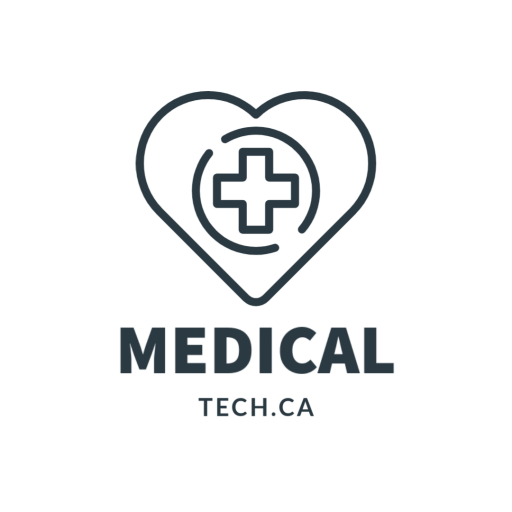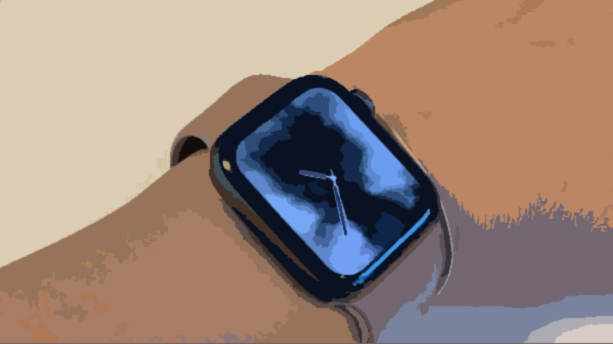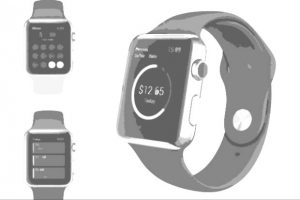
by medicaltechont | Jul 8, 2023 | AI, EHR, Healthcare, Microsoft, Software, Technology
Microsoft Corp. and Epic recently announced an exciting development in their strategic collaboration, aiming to revolutionize the healthcare industry. The two technology giants are combining their expertise to integrate Azure OpenAI Service with Epic’s industry-leading electronic health record (EHR) software. This collaboration unlocks the potential of generative AI, providing powerful tools for healthcare professionals.
Building upon their existing partnership, which allows organizations to leverage the Microsoft Azure cloud platform for running Epic environments, this integration marks a significant step forward.
By clicking here, you can delve into the details and explore the future possibilities this collaboration holds for the healthcare landscape.
“Microsoft is committed to creating responsible AI by design that is guided by a core set of principles: fairness, reliability and safety, privacy and security, inclusiveness, transparency, and accountability.”
Click here for more details.

by medicaltechont | Jul 2, 2023 | Healthcare, Pandemic, World
Understanding Long-COVID and its Impact
As the world continues to grapple with the aftermath of the COVID-19 pandemic, a concerning phenomenon known as long-COVID has emerged. Long-COVID refers to the persistence of symptoms and health issues that extend beyond the acute phase of the illness, affecting individuals who have recovered from COVID-19. Ongoing medical research is shedding light on this complex condition, uncovering new developments and insights into its long-term effects.
Persistent Symptoms: Unraveling the Lingering Effects of Long-COVID
Studies have shown that long-COVID can manifest in various ways, with individuals experiencing a wide range of symptoms that can last for weeks, months, or even longer. Fatigue, brain fog, shortness of breath, joint pain, and anxiety are just a few examples of the persistent symptoms reported by long-COVID patients.
The exact mechanisms behind these symptoms are still being explored, but researchers believe that a combination of factors, including viral persistence, dysregulation of the immune system, and inflammation, may contribute to the prolonged health issues experienced by these individuals.
Treatment Strategies: Addressing Symptoms and Improving Quality of Life
Medical professionals and researchers are actively working to understand and address the challenges posed by long-COVID. Efforts are underway to develop effective treatment strategies and rehabilitation programs to alleviate symptoms and improve the quality of life for those affected.
Additionally, initiatives are focused on identifying risk factors, predicting outcomes, and developing guidelines for long-term management of this condition.
Looking Ahead: Hope for Improved Understanding and Care
The evolving landscape of long-COVID research brings hope for improved understanding, treatment, and support for individuals dealing with its lingering effects. By staying informed about the latest developments, we can contribute to the collective effort to combat the long-term consequences of COVID-19 and provide better care for those affected by long-COVID.

by medicaltechont | Apr 8, 2022 | Healthcare, Ontario, Pandemic
Based on the amount of coronavirus found in the province’s wastewater, Ontario is witnessing 100,000 to 120,000 new cases of COVID-19 every day. There were 1,074 individuals with COVID-19 in Ontario hospitals as of Wednesday morning, with the load on the healthcare system showing no signs of alleviating anytime soon.
How Is Wastewater Monitored?
The use of wastewater testing to monitor health hazards such as polio, antimicrobial resistance, and illegal drug use in populations has a long history of guiding public health action. It can also be used to identify COVID-19. People infected with the virus may not develop symptoms for up to 14 days, or they may be asymptomatic or minimally symptomatic, which means many infected people may go undiagnosed, unaware that they are possibly spreading the infection to others.
What To Do Now?
While the province believes it can increase resources if necessary, more beds will be useless if hospitals do not have healthy employees to care for them. Its import to make sure that we deliver as many vaccines as possible. We cannot allow these variants to continue to spawn in different parts of the world.

by medicaltechont | Mar 7, 2022 | Cloud, Electronic Medical Records, hackers, Healthcare, Hospitals
Mon Health discovered the second data security incident on December 18, 2021, when it detected unusual network activity. After the discovery, Mon Health disabled a “significant portion” of its IT network and initiated downtime procedures.
The breach did not involve Mon Health’s EHR systems. Still, it potentially exposed the names, addresses, Medicare claim numbers, Social Security numbers, birth dates, health insurance plan member ID numbers, dates of service, patient account numbers, medical information, and health plan enrollment status of some patients, providers, employees, and contractors.
Mon Health discovered the second data security incident on December 18, 2021, when it detected unusual network activity. After the discovery, Mon Health disabled a “significant portion” of its IT network and initiated downtime procedures.
The breach did not involve Mon Health’s EHR systems. Still, it potentially exposed the names, addresses, Medicare claim numbers, Social Security numbers, birth dates, health insurance plan member ID numbers, dates of service, patient account numbers, medical information, and health plan enrollment status of some patients, providers, employees, and contractors.
Click here to read more.

by medicaltechont | Jun 20, 2021 | Apple, Apple Watch, Healthcare
 Atrial fibrillation (also known as AFib or AF) is an arrhythmia (quivering or irregular heartbeat) that can cause blood clots, strokes, and heart failure. When a person has AFib, the usual beating in the top chambers of the heart (the two atria) is irregular, and blood flow from the atria to the lower chambers of the heart isn’t as efficient as it should be (the two ventricles). AFib can manifest itself as a series of transient episodes or as a long-term disease.
Atrial fibrillation (also known as AFib or AF) is an arrhythmia (quivering or irregular heartbeat) that can cause blood clots, strokes, and heart failure. When a person has AFib, the usual beating in the top chambers of the heart (the two atria) is irregular, and blood flow from the atria to the lower chambers of the heart isn’t as efficient as it should be (the two ventricles). AFib can manifest itself as a series of transient episodes or as a long-term disease.
So how does this relate Apple? You can take an electrocardiogram (ECG) with the ECG app and an Apple Watch. The ECG app for Apple Watch Series 4, Series 5, or Series 6* can record your heartbeat and rhythm using the electrical heart sensor, and then check the recording for atrial fibrillation (AFib), a type of abnormal rhythm. To learn more about Apple Watch and taking an ECG, click on the link below.
https://support.apple.com/en-ca/HT208955

by medicaltechont | Jun 19, 2021 | Apple, Apple Watch, Healthcare, Technology
 The WWDC presentation was jam-packed with new capabilities for its hardware devices. Its initial Health app, released in 2014, contained personal health and wellness updates; pushing Apple into the healthcare arena. It’s difficult to judge the impact of Apple’s work in these areas at the moment, and health-related product announcements aren’t always as big as user interface changes. Apple’s main focus is to collect health data from your iPhone, Apple Watch, and other apps so you can keep track of your progress in one location. Apple’s devices are able to track your steps and walking; while running distances are automatically monitored by Health. You can look at long-term patterns or go into the nitty gritty of a variety of health parameters.
The WWDC presentation was jam-packed with new capabilities for its hardware devices. Its initial Health app, released in 2014, contained personal health and wellness updates; pushing Apple into the healthcare arena. It’s difficult to judge the impact of Apple’s work in these areas at the moment, and health-related product announcements aren’t always as big as user interface changes. Apple’s main focus is to collect health data from your iPhone, Apple Watch, and other apps so you can keep track of your progress in one location. Apple’s devices are able to track your steps and walking; while running distances are automatically monitored by Health. You can look at long-term patterns or go into the nitty gritty of a variety of health parameters.
I have an Apple Watch and find it to be one of the most useful and adaptable gadgets available. With so many other companies on the market, Apple has delivered a solid and reliable device focused on the user experience while continuing to advance in healthcare by leaps and bounds. Apple’s devices can monitor your steps, walking, running distance, heart rate and nutrition; along with providing additional information on sleep analysis, heart rate variability and weight. During the pandemic, there have been several changes, including a shift in how we collect information about our health. With this shift Apple stated that privacy and security are an important aspect of the value of its products.
Apple will continue to be present as we move forward, providing a more consistent application of care. Want to watch the entire WWDC presentation? Click here.






 Atrial fibrillation (also known as AFib or AF) is an arrhythmia (quivering or irregular heartbeat) that can cause blood clots, strokes, and heart failure. When a person has AFib, the usual beating in the top chambers of the heart (the two atria) is irregular, and blood flow from the atria to the lower chambers of the heart isn’t as efficient as it should be (the two ventricles). AFib can manifest itself as a series of transient episodes or as a long-term disease.
Atrial fibrillation (also known as AFib or AF) is an arrhythmia (quivering or irregular heartbeat) that can cause blood clots, strokes, and heart failure. When a person has AFib, the usual beating in the top chambers of the heart (the two atria) is irregular, and blood flow from the atria to the lower chambers of the heart isn’t as efficient as it should be (the two ventricles). AFib can manifest itself as a series of transient episodes or as a long-term disease.
 The
The 